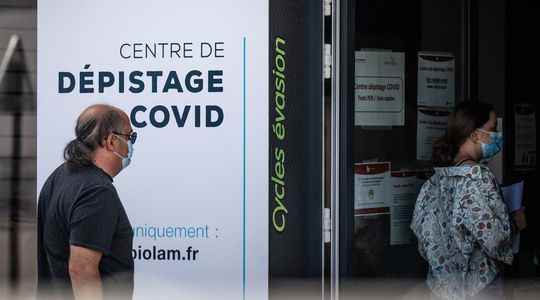Neither optimism nor pessimism. In its first opinion, transmitted to the national authorities on Thursday 20 October and unveiled on mondaythe Health Risk Monitoring and Anticipation Committee (Covars), the successor to the Scientific Council, evokes a current epidemic wave of Covid-19 of “moderate intensity”, while remaining cautious for the future in the face of potential new variants.
“A pandemic rebound in France and Europe affects the elderly and remains for the moment of moderate intensity but with a dynamic to be monitored”, according to this body with 18 members, created on July 31 and chaired by immunologist Brigitte Autran, which is responsible for making recommendations in the face of a health threat or crisis.
In its sights in particular: the rapid growth of the Omicron BQ.1.1 sub-variant, detected in France in mid-September, which now represents 15% of the viruses detected in mainland France, and nearly half in Ile-de- France. However “the level of immune escape of BQ.1.1 is uncertain”, warns the Covars.
A “set of factors” explains the epidemic recovery
Be that as it may, the epidemic restart observed in France, as in part of Europe, “does not seem to be due to the appearance of a new variant stricto sensu”, he believes, but rather to a set of other factors such as the decline in collective immunity, climatic conditions favorable to the spread of the virus, etc.
“The appearance of these variants (BQ.1.1, BA.2.75.2 and XBB derived from BA.2) during this epidemic resumption accompanied by the replacement of the BA.5.2 hitherto in the majority could reinforce the intensity of the wave in progress and extend it if the immune escape is confirmed. It will be important to monitor the protection conferred by collective immunity early on, to promote the use of new generation vaccines and therapeutic strategies”, notes the Covars.
According to the watchdog, “the analysis of the growth rates of the various epidemiological indicators suggests that we could be very close to the epidemic peak”. But “these encouraging signals must be tempered” because of the “rapid growth of the BQ.1.1 variant on national territory”.
The context of the “fragility” of the hospital
And if the epidemic wave that appeared in mid-September 2022 “has a less significant direct hospital impact than previous waves”, even before the start of winter “hospital capacities remain significantly reduced”, he warns. Other winter infectious diseases such as influenza, bronchiolitis or gastroenteritis could also affect the health system.
“These epidemics greatly increase the strain on specialized services. The impact of these epidemics on the hospital system is reinforced by the current fragility of the hospital: the General Directorate for the Offer of Care estimates that hospital absenteeism during the winter 2021/2022 was between 11% and 16% for non-medical personnel (PNM) and anticipates the same level of absenteeism this winter”, details the body.
The Covars therefore recommends continuing the prevention and vaccination measures put in place to deal with Covid-19. Several levers must thus be “activated”: “vaccinate, promote the wearing of masks, control the quality of the air”, he advocates.
